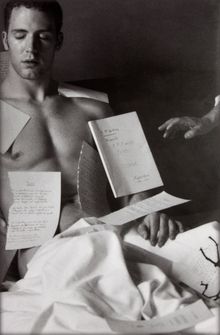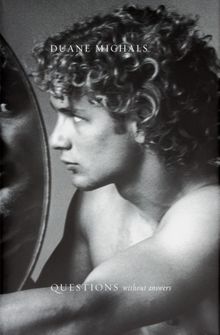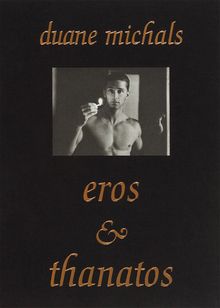| |||||||||||||||||||||||||
PHOTOGRAPHY MONOGRAPHS
|
|
STATUS: Out of print | 00/00/00 For assistance locating a copy, please see our list of recommended out of print specialists |
 Duane Michals: The Adventures of Constantine Cavafy
Duane Michals: The Adventures of Constantine Cavafy
Published by Twin Palms Publishers.
"Please meet me in the circle of this conceit. These little fables of my imaginary theatrics repeat the mantras of Cavafy's desires and regrets: so old today, now gone away.”—Duane Michals
Duane Michals (born 1932) returns to the verse of 20th-century Greek poet Constantine Cavafy for inspiration for his most recent work. Michals's images loosely illustrate Cavafy's poetry, while investigating themes of lost time, love discovered and remembered and the sublime realm of the surreal.
PUBLISHER
Twin Palms Publishers
BOOK FORMAT
Hardcover, 9 x 13 in. / 120 pgs / 112 color.
PUBLISHING STATUS
Pub Date 4/1/2007
Active
DISTRIBUTION
D.A.P. Exclusive
Catalog: Publisher Backlist
PRODUCT DETAILS
ISBN 9781931885546 TRADE
List Price: $65.00 CAD $88.00 GBP £55.00
AVAILABILITY
In stock
in stock $65.00 Free Shipping UPS GROUND IN THE CONTINENTAL U.S. |
 Duane Michals: Questions Without Answers
Duane Michals: Questions Without Answers
Published by Twin Palms Publishers.
"As my consciousness spirals to its predestined disappearance, age has forced me to pay attention. Now I begin to see the silhouette of the mystery. I think about thinking and am beyond the comfort of conformity. I must ask questions that I never thought to ask before. The most profound questions seem to be transparent in their ordinariness and deceptive in their significance. A child would understand. I know that this modest enquiry must fail. But what else am I to do?" —Duane Michals (born 1932)
PUBLISHER
Twin Palms Publishers
BOOK FORMAT
Hardcover, 9 x 13 in. / 112 pgs / 69 color.
PUBLISHING STATUS
Pub Date 2/1/2002
Active
DISTRIBUTION
D.A.P. Exclusive
Catalog: Publisher Backlist
PRODUCT DETAILS
ISBN 9780944092866 TRADE
List Price: $75.00 CAD $108.00 GBP £67.00
AVAILABILITY
Out of stock
STATUS: Out of stock Temporarily out of stock pending additional inventory. |
 Duane Michals: Eros and Thanatos
Duane Michals: Eros and Thanatos
Published by Twin Palms Publishers.
In Twin Palms' fourth book of Duane Michals' (born 1932) work, the artist explores classic themes of love and death through photographs and words. The evocative images and poems collected in Eros and Thanatos conjure memories of love and loss, lust and longing, in what is perhaps the most revealing and overtly sensual of Michals' works to date. The full richness of Michals' imagery emerges from these exquisite, large-format sheet-fed gravures.
PUBLISHER
Twin Palms Publishers
BOOK FORMAT
Hardcover, 11 x 15 in. / 64 pgs / 43 bw
PUBLISHING STATUS
Pub Date 4/1/1993
Active
DISTRIBUTION
D.A.P. Exclusive
Catalog: Publisher Backlist
PRODUCT DETAILS
ISBN 9780944092200 TRADE
List Price: $75.00 CAD $108.00 GBP £75.00
AVAILABILITY
In stock
in stock $75.00 Free Shipping UPS GROUND IN THE CONTINENTAL U.S. |
